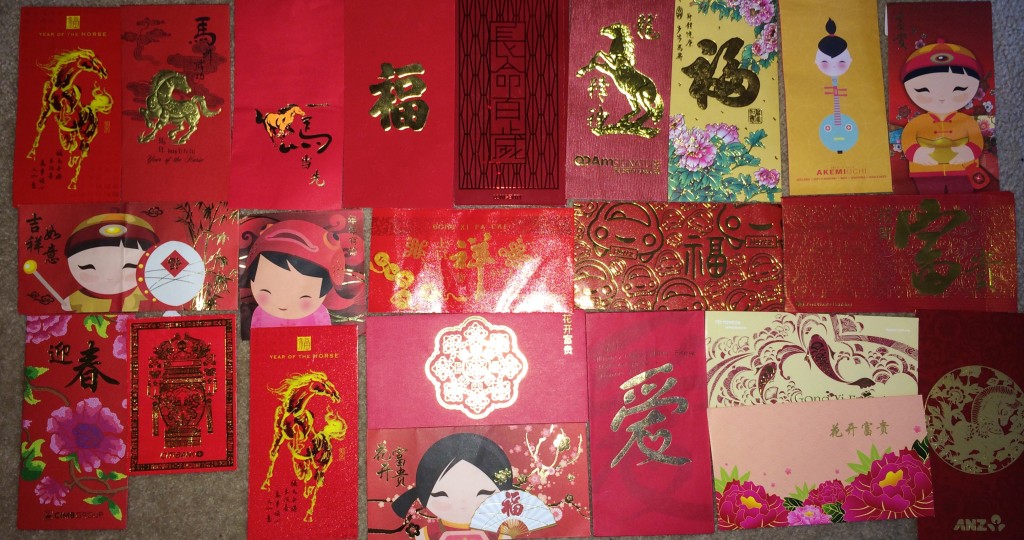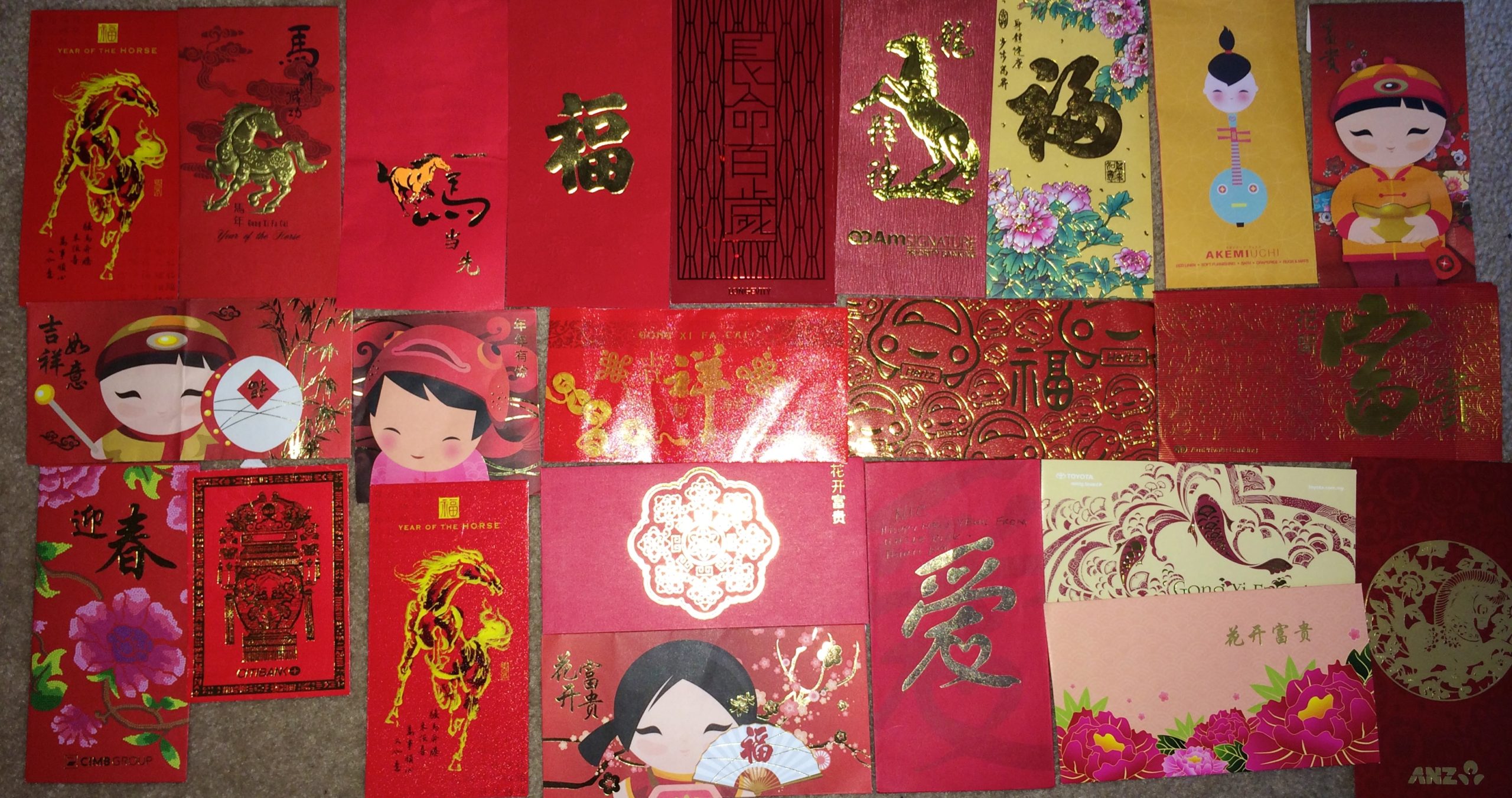 Chinese New Year is a lunar festival, which is why the date changes from year to year. A full traditional celebration takes 15 days. Personally I don’t follow every single tradition although I do have family members who are much more highly experienced in the traditions. Parts of this article were actually contributed by my dad’s friend who wrote a long email explaining the traditions and days.
Chinese New Year is a lunar festival, which is why the date changes from year to year. A full traditional celebration takes 15 days. Personally I don’t follow every single tradition although I do have family members who are much more highly experienced in the traditions. Parts of this article were actually contributed by my dad’s friend who wrote a long email explaining the traditions and days.
CNY Eve is the occasion for families to unite and hold a reunion dinner. For me, this took place in KL with my mum’s immediate family. My dad was also with his siblings on the Eve, just in Penang. Whereas the KL dinner was held at a restaurant, the Penang affair was a home-cooked episode of steamboat/hot pot. Past Melbourne celebrations have seen us host steamboat ourselves, but Melbourne has also seen many a restaurant banquet over the years.
CNY season is actually not a good time to patronise Chinese restaurants, especially if you are hankering for normal dishes. This is because their usual menus are replaced by Prosperity Dishes and to simply matters further, you are urged to opt for one of three or four set menus of these prosperity dishes, which will always feature the obligatory Lo Hei Yu Sang. When you partake of these prosperity dishes, do remember that it’s as much for boosting the restaurant owner’s prosperity as for enhancing your own prosperity prospects. Prices can also be marked up.
Prosperity dishes and/or their ingredients have one or both of these attributes: their physical shape and that their names as pronounced sound similar to words signifying prosperity. For example, you are probably acquainted with “fa cai” (black moss) and “ho xi” (dried oysters). Yes, it’s homonyms galore. The dish “pen cai” is featured everywhere this year, in restaurants or as a takeaway and even in some zhi chars. This started as a humble poor man’s all-in-one “rojak” hot-pot dish but now, you can pay as much as $1,000 upwards for a luxe version.
It is now prevalent for Chinese restaurants to open throughout CNY except for the first day of the Lunar Year. Moreover, such is the demand that most restaurants are able to impose a two-sitting rule, even in the case of top restaurants and even if you are a favoured customer. Typical sittings are from 6 to 8 pm and 8 pm to close of business. This year, bookings have been made as early as three months ago or earlier: so don’t hope for a walk-in table. It’s already full house! So far, the most expensive table I know of is $8,888 for a set dinner for a table of ten pax. If wine of suitable pedigree to match this sumptuous feast is included, the tab could easily top $20,000. Of course, my family did not dare try anything at this top end of town!
What is interesting is that prosperity dishes would be considered quite exotic.Unless you enjoy braised pig trotters with yam, stewed duck with mushrooms and black moss, steamed “pai chiar her” ( New Year fish), pan-fried nian gao – the cuisine is simply not going to appeal.
One tradition is the lion dance, where 2-3 people are costumed up and perform a dance set to beating drums. This entertainment is provided to paying hosts (restaurants or home owners) and the apex of the performance is usually where the lion is standing fully upright to reach red packets placed on a ceiling or positioned at a similar height. Some times the dance can also incorporate a game where the lion will play with lettuce balls first before finding the red packets.
On CNY day (the first day), celebrations break out at midnight, when historically, firecrackers and instruments would make a loud noise. The Chinese belief was that this racket would drive away all the evil spirits. The first day has a strong focus on honour and respect for your elders. A tea ceremony is performed, consisting of the elders (grandparents where present, or parents) sitting down and the children presenting tea to each sitting elder. After serving tea, the elder may dispense words of wisdom and then give a red packet (hong bao/ang pau depending on your dialect) to the child. The order is always from oldest to youngest, generation to generation.
Red packets are always filled with money – it is highly desirable for the notes to be fresh, and the larger packet size is probably to allow for the notes to go unfolded. Whilst there is no set amount that should be given, some people will follow the Chinese belief in lucky number 8 and given amounts that align to that ($88). The amount can thus vary from a few dollars to large 3-figure amounts.
The first day of CNY is the day to visit family. As a sign of respect the younger family members will visit their elders. For me, in KL my aunts, uncles and cousins first visited the 4th Uncle, who then hosted a restaurant lunch for us all. After lunch we then all adjourned to the home of 2nd Uncle. (The first 3 uncles are all deceased). When visiting relatives, one tradition easily practiced is the bringing of Mandarin oranges. Whilst many people would have eaten hundreds of these ubiquitous CNY puppies over the years, there are actually 3 common types of mandarins encountered in Asia: Ponkan, Lukan, and Swatow. All these varieties from China and Taiwan. You will find several other types of oranges at supermarkets and wet markets, including the lucious kinos and also tangerines, but for gifting, stick to the three main types. While The China oranges this year have suffered from the climatic conditions, the Ponkans from Taiwan are reportedly very good and reasonably priced.
Bak Kwa. Most of this traditional sweetmeat is now made from Australian pork and you can now even buy organic bak kwa from Australian-farmed pigs. I always recall some Singaporean show explaining the key difference between “ah kwa” versus “bak kwa”. Whilst the meat can be bought all year round, CNY is particularly the season for eating it.
Particular Auspicious CNY Days
Everybody’s Birthday (Ian Yat or Ren Ri) is celebrated on the 7th Day. A wonderful day to celebrate with your friends in dining and wining, whether at zhi chars or restaurants.
Double Valentine’s Day Celebrations This Year!
In the Western world, Valentine’s Day was held on 14 Feb 2014. Whilst you may be familiar with the legend surrounding this celebration, you probably do not know that the Chinese have their own Valentine’s Day and this year, coincidentally, it also was on 14 Feb.
Pai Ti Kong (honoring the Jade Emperor of Heaven). For the Hokkien people, this day, celebrated on the 9th day of the Lunar Year, is even more important than the first day of the Lunar Year.
Lantern Festival (Chap Goh Mei)
Chap Goh Mei rings down the curtain to the CNY celebrations over fifteen days. It used to end at 7pm for most Singaporean households with the firing of firecrackers and a dinner at home. In Chinatown, there were firecracker wars between various companies which strung up strings of firecrackers, 15m high in the vicinity of Eu Tong Sen Street, particularly the heritage building where the renowned Southern Cabaret was sited (now housing the China emporium Yu Hwa).
Chap Goh Mei 2014 was for lovers, since it combined both Chinese and Western Valentine’s Day events. On the day, Dondang Sayang orchestras, music, pantuns and singers would perform.
Related
 Chinese New Year is a lunar festival, which is why the date changes from year to year. A full traditional celebration takes 15 days. Personally I don’t follow every single tradition although I do have family members who are much more highly experienced in the traditions. Parts of this article were actually contributed by my dad’s friend who wrote a long email explaining the traditions and days.
Chinese New Year is a lunar festival, which is why the date changes from year to year. A full traditional celebration takes 15 days. Personally I don’t follow every single tradition although I do have family members who are much more highly experienced in the traditions. Parts of this article were actually contributed by my dad’s friend who wrote a long email explaining the traditions and days.

You must be logged in to post a comment.